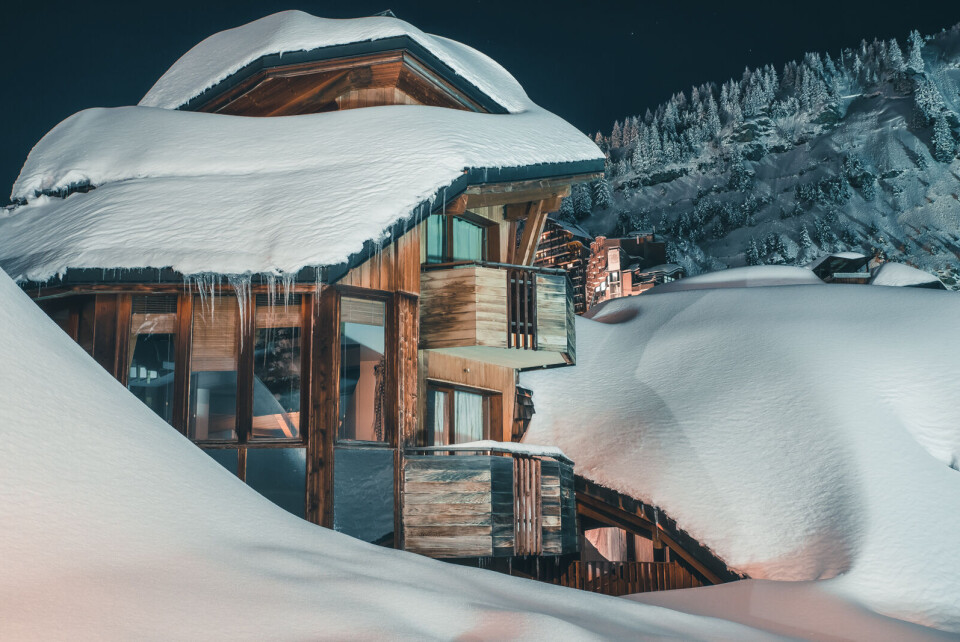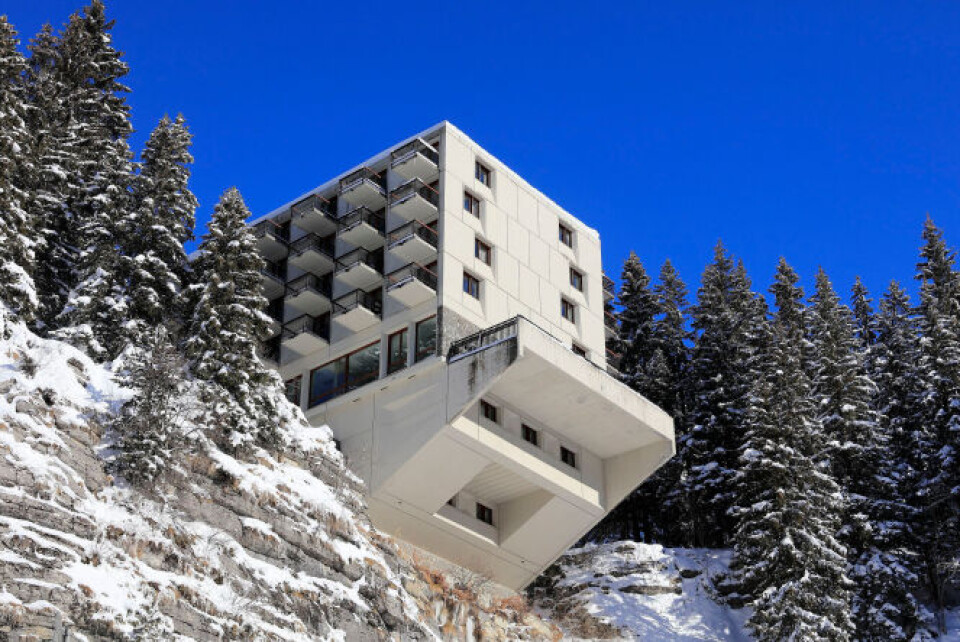-
New ski night train will link Paris to the French Alps
The Travelski Night Express will begin service this December and start selling tickets in May
-
Ski collision accidents soar in France: skiers reminded of rules
‘We are alarmed by the high level and severity of accidents’, a health authority warns
-
Closest ski resort to Paris for sale
La Loge des Gardes, a family-friendly resort, offers year-round activities and is seeking new ownership
French ski slopes gave architects a platform to build boldly
Modern techniques and pioneering ideas defined many of the ski resorts built in the 1960s and 70s in France, with some even classified as historic monuments

Many of the French ski resorts built in the 1960s and 70s are now regarded as examples of pioneering architecture.
They were constructed during the Trente Glorieuses, a period of unprecedented economic growth after World War Two when resorts were developed on virgin territory, giving architects freedom to be creative. There were new materials, new money and new ideas.
Flaine, at Arâches-la-Frasse in Haute- Savoie, was built in the Bauhaus style and is famous for its open-air sculptures by renowned artists including Picasso.
The founders were two great patrons of the arts in the 20th century, Eric and Sylvie Boissonnas, who wanted to play a role in the expansion of winter sports and the reconstruction of France. They found the site in 1959 and brought in well-known modernist architect Marcel Breuer who, on his first viewing, said: “What a wonderful site! How do we avoid spoiling it?”
He was determined to use modern techniques, but at the same time respect the natural relief lines and beauty of the surrounding landscape, and he made the centre car-free.
He used relief on the facades, shaped like the points of a diamond, so that the sun’s rays would strike at different angles to produce reflections of contrasting intensity.
One of the resort’s most famous buildings is Le Flaine hotel, with a daring terrace extending beyond the cliff edge, hanging in space.

Other resorts showing architectural merit include Les Arcs at Bourg-Saint-Maurice in Savoie, which in 2006 was given the label Patrimoine du XXe siècle by the Ministry of Culture.
The project was dreamt up in the 1960s by a local mountain guide, Robert Blanc, and entrepreneur Roger Godino.
They hired architect Charlotte Perriand, who had been brought up in the Savoie mountains. She was an associate of Le Corbusier and at the peak of her career in Paris at a time when there were very few women in the profession.
Her aim too was to make a car-free resort which would blend into the landscape, and so her buildings lean into the slopes, rather than towering above them. In one of the early ones, the front walls are tilted back so that each level of apartments receives an equal amount of sunlight. At the back, there is the same slope in reverse, and large windows to reflect light from the snow.

Le Versant Sud, meanwhile, completed in 1974, was built in staggered levels. Roofs are flat and in winter the higher buildings behind overlook white snow on the roof in front, hiding the apartments below.
The layout of rooms was important to Ms Perriand, who designed them to suit the needs of the people living in them.
They were open-plan with kitchens separated from the sitting room by a bar rather than a wall, so that the person cooking did not feel left out.
Avoriaz in the commune of Morzine, Haute-Savoie, was also ahead of its time. Jean Vuarnet, a local Olympic ski champion, discovered the site and by 1963 he had already organised the building of a ski-lift which connected Morzine in the valley to the plateau above.
Entrepreneur Gérard Brémond, who later founded the holiday company Pierre & Vacances, was interested and brought with him three young architects from Paris – Jacques Labro, Jean-Jacques Orzoni and Jean-Marc Roques.
'Innovative on so many levels'
Mr Labro, now 85, is still in contact with the current team of architects at Avoriaz, led by Simon Cloutier.
“The original resort was innovative on many levels,” says Mr Cloutier.
“As in Flaine and Les Arcs, Jean Vuarnet was determined the resort should be car-free. This made it difficult to attract investors as at that time Georges Pompidou was in power and promoting the idea of bringing cars into towns and widening roads to make it possible.
“Making the resort car-free also meant the 20,000 tourists it catered for had to be housed close together in large buildings rather than spread out in chalet-type accommodation, so no one had to walk too great a distance. At Avoriaz, everything is designed so you can move around not just on foot, but entirely on skis.”
Wood was used to help blend the resort into the landscape. Red cedar shingles cover the buildings. They are long-lasting, need no treatment and fade to grey to merge naturally into the background.
'Urban-scale development had never existed before this in the mountains'
“The architects did not want to create square shoebox buildings, but to integrate them into the landscape. However, curves meant there might only be one or two apartments on the top floor" says Mr Cloutier.
“We have to credit not only the architects, but also the investors with the courage they required to finance a building with a lift right to the top floor, which only served perhaps one apartment. The chosen shapes are not just aesthetic but practical, to make sure, for example, that each window has a view.”
He says the young architects from Paris were remarkable. They had no experience of snow and freezing temperatures but introduced ideas we now take for granted.
“They were early ecologists, though they did not know it. The main structure is in concrete, but with an outside layer of insulation covered in wooden shingles, wrapping the main structure in an ‘overcoat’. This had never been seen before.
“The balconies are separate constructions so the cold temperatures they attract are not transferred into the main building.
“The concrete roofs are flat with, above them, a separate layer of wood where the snow never melts – an idea taken from local traditional farmhouses which used snow as a layer of insulation.”
Mr Cloutier started working in Avoriaz in 1996 and took over as the head of Atelier d’Architecture d’Avoriaz from Mr Labro in 2007. Pierre & Vacances is still the owner.
“There is a sense of continuity, and the earliest constructions are still a source of inspiration,” he says.
“From the very beginning, a great deal of thought went into the resorts, using ideas well ahead of their time.
“It was an unprecedented chance for young architects to shine.”
Related stories
‘Incompatibility of French-UK Covid systems harming French ski season’
Why do French restaurants have such bright lighting?
Villa E-1027: A modernist masterpiece Riviera property restored
























